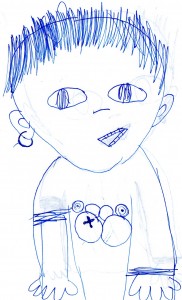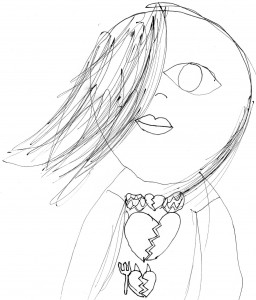[I know, I know. Theater Book of the Week is on hold as I build up reserves to start a designated area of this site just for theater stuff. You got a problem with Comics Book of the Week?]
The Norm was the break-out comic strip sensation of a time when newspapers happened to be dropping strips, not adding them. Originally about a young single man who doesn’t like his workplace very much, it abruptly and cleverly shifted scenarios wholesale several times. Norm got fired. He had girlfriends. Ultimately, he got married, to a friend who’d been around for the whole history of the strip yet hadn’t been considered a romantic interest. The most brilliant bit about the marriage was that Jantze refused to dwell on the engagement and wedding and newlyweddedness. He simply fast-forwarded a year or two, as if announcing “I’m not going to waste all our time on that stuff.” The Norm became its own sort of marital sitcom—wife Reine’s parents moved into the house next door and badgered the younger couple relentlessly to have children.
But for all its Blondie-esque normalcy (the style and casual air respect and honor the funny-papers rules laid down by classic strips), The Norm always seemed contemporary. It trades in the usual clichés about geekiness, 9-to-5 nonsense and awkward romances, but it stays honest and human. There are plenty of arguments, but also frequent strips about the sheer joy of being in love, or of being outdoors, or of being alive. There are gags about the complexities of modern life, but I can’t imagine this dialogue happening between Hi and Lois:
Reine: I like my cell phone too much to quit using it. So I bought an earpiece! This way the radiation won’t give me brain cancer…
Norm: Where do you set the phone when you talk?
Reine: In my lap.
Norm: Isn’t that where you keep your ovaries?
Reine: AAAAA!
The Norm never got into a lot of newspapers, but its creator Michael Jantze proved to be a canny marketer, creating new opportunities for The Norm to be found by the faithful. The strips were collected in book form, comic book form and various coffee-table or collector’s-box formats. There were shirts and stickers and buttons. Online, it’s been an Apple desktop dashboard app, an annotated site where Jantze jotted down commentary on each strip, and a jandy device which flashed a different Norm trip every 30 seconds. (One of the most deliriously distracting computerized comic strip concepts of all time.) Currently, The Norm persists on gocomics.com, which posts a “new” old strip every day.
Yesterday came news that The Norm had been adapted to yet another medium, the Kindle. Several hundred strips from the dawn of the 2000s, originally packaged as the “Ball Collection,” are available for $10 from amazon.com. The selection includes a sequence where Norm and Reine start dating—as subterfuge on her part.
Norm: You told your folks we’re dating?
Reine: Actually, we’re real serious.
Norm: What? Why?
Reine: It was a slip! My parents only judge my successs by…
[Her mother strolls into the room. Reine throws her arms around Norm and kisses him. The mother whistles cheerily.]
Reine [breaking the liplock]: So when they started in about my brother…
Norm: Okay, rule one! If we’re just pretending, then put the tongue away!
The Kindle device itself is not a great place to read comics—you can’t pinch them larger, and if there are several on a page, the print’s too small to read. The Kindle App, on the other hand, lets you read Kindle books on iPods and iPhones (where you can expand them to readable size, even though the device you’re reading on is smaller than a Kindle) and especially on iPads and home computers.
The Norm only ever existed when newspapers had already shrunk comic strips to their smallest conceivable sizes. Jantze is a skilled designer (when The Norm had its own grandiose website, it was a clean, colorful, easily maneuverable joy) and strives to make that confined area work in his favor–with the iconic slumped-over figure of Norm waking up in the morning, for instance.
I don’t like that The Norm doesn’t get produced anymore (Jantze appears to have been having success with animation and other artistic projects), but I happily read the old strips over and over, and the Kindle edition gives me another option of how to do that. This Ball collection is only the tip of an enormous Norm archive. May many more Kindle Norms follow.


